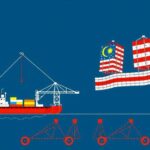Politics
ALAN ESTEVEZ, ALLEN, ASIA, AUTOMOTIVE INDUSTRY, BEIJING, CHINA, CSIS, EUROPE, GEOPOLITICS, GREGORY ALLEN, INDUSTRY AND SECURITY, ISRAEL, JAPAN, KLA CORPORATION, MALAYSIA, MANI, MEXICO, NETHERLANDS, NORTH AMERICA, ROBOTICS, SAMSUNG, SINGAPORE, SK HYNIX, SOUTH KOREA, TAIWAN, TARIFFS, TRADE, UNITED STATES, US, WASHINGTON
Sophia Klein
US Export Restrictions Intensify Challenges for China’s Semiconductor Sector
The US has imposed extensive export restrictions on China’s semiconductor industry, targeting chipmaking equipment and high-bandwidth memory. These measures raise concerns about supply chain disruptions and include new sanctions on Chinese entities. While Japanese and Dutch firms benefit from exemptions, Asian nations face pressure to align with either the US or China. As China aims for semiconductor self-sufficiency, it may dominate legacy nodes, impacting the competitive landscape of the semiconductor sector.
The United States has implemented extensive new restrictions targeting China’s semiconductor sector, particularly focusing on chipmaking tools and high-bandwidth memory (HBM). This initiative raises significant concerns about potential disruptions to the global supply chain as export controls extend to manufacturers from various countries, including Israel, Malaysia, Singapore, South Korea, and Taiwan. However, notable exemptions have been granted to firms based in Japan and the Netherlands, including Tokyo Electron and ASML, underlining diplomatic negotiations between these nations and Washington.
The rules also place 140 new Chinese entities on a blacklist, reflecting the US government’s strategy to counter China’s ambitions for semiconductor self-sufficiency. According to Alan Estevez, Under Secretary of Commerce for Industry and Security, the ongoing discussions with allies and partners are crucial as America revises and updates its export controls. A pivotal element of the new sanctions includes the ‘Foreign Direct Product Rule’, which broadens restrictions on foreign products containing US technology. This aspect could significantly affect US toolmakers’ operations as they increasingly look to expand manufacturing outside of the United States.
The newly enforced restrictions specifically target the manufacturing of AI chips, aiming to impede China’s access to advanced chipmaking equipment and memory resources. Analysts have warned that this could temporarily disadvantage many companies in Asia, as local manufacturers may struggle with production capacity due to the absence of essential chipmaking tools. Significant companies like Samsung may face substantial challenges as they navigate this complex landscape, especially given that a considerable portion of its HBM chip sales occur within the Chinese market.
Furthermore, the implications for supply chain dynamics are serious, with the potential for rising chip prices and squeezed profit margins for technology firms engaged in AI research and development. Companies may need to seek alternative suppliers and adjust procurement strategies, although identifying replacements for advanced semiconductors may prove both costly and difficult.
Lastly, while China is striving for greater self-sufficiency in semiconductor production amid heightened restrictions, it is anticipated that it could dominate the legacy nodes. This strategic pivot suggests that while advanced chipmaking technologies may remain concentrated in the US and Taiwan, China may bolster its market presence in older semiconductor technologies, potentially lowering prices but leaving advanced capabilities with technologically superior nations.
The semiconductor industry forms the backbone of modern technology, powering everything from smartphones to AI applications. Recent geopolitical tensions between the United States and China have intensified competition in this sector. As the US seeks to curb China’s technological advancements, particularly in AI and semiconductor capabilities, export restrictions have become a critical tool in this strategy. The focus on controlling high-bandwidth memory and chipmaking tools arises from concerns over military applications and the ambition of the Chinese government to achieve semiconductor self-reliance, complicating global supply chain dynamics.
In summary, the United States’ recent restrictions on China’s semiconductor sector signal a strategic effort to limit access to advanced technology crucial for AI development. These measures, which broaden export controls and include a range of manufacturers, could lead to significant disruptions within global supply chains and impact companies across Asia. While exemptions for certain firms may alleviate some immediate pressures, the overarching challenges in diversifying supplies and the potential rise in costs underscore the complexities of navigating modern semiconductor geopolitics. The landscape of semiconductor production is poised for a strategic shift, particularly in legacy technologies, as China adapts to a competitive future.
Original Source: www.cio.com








Post Comment